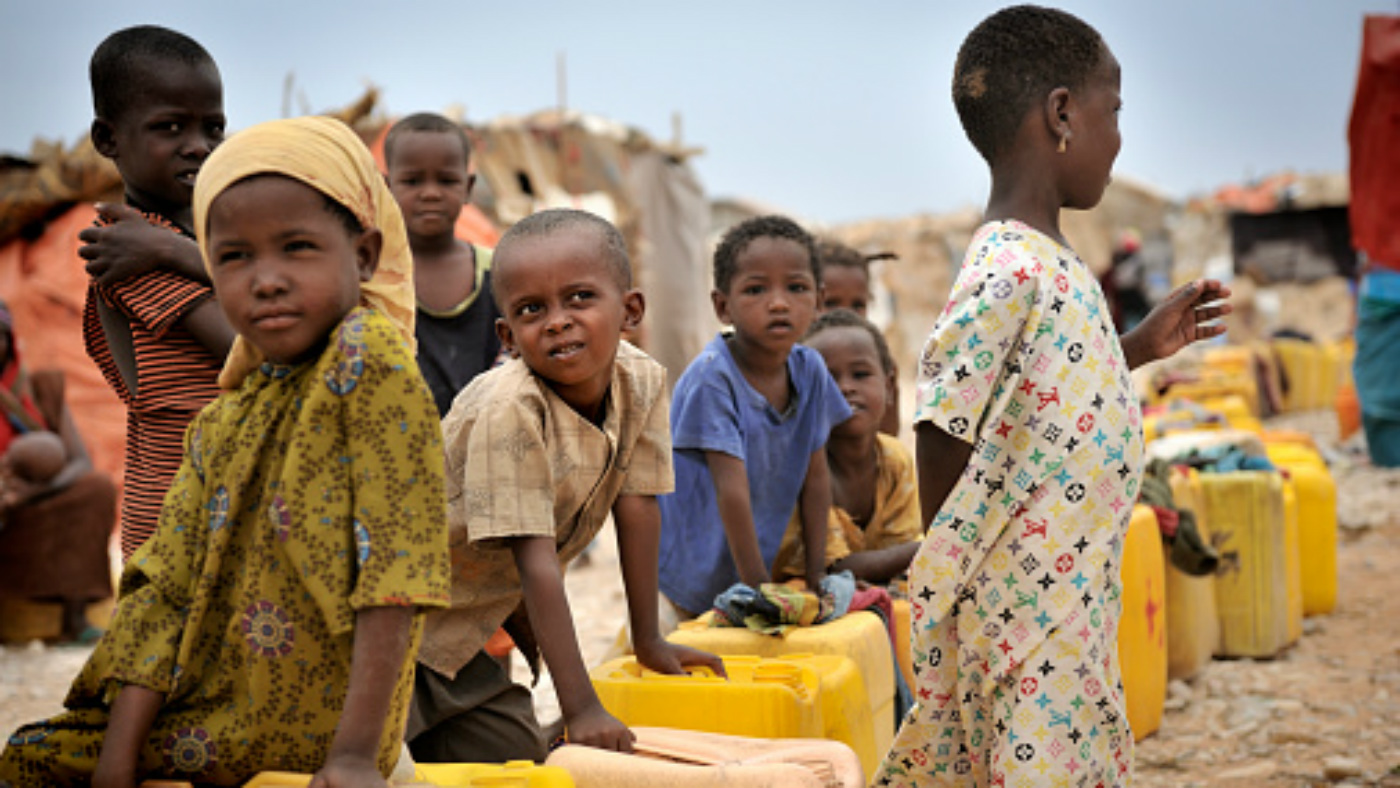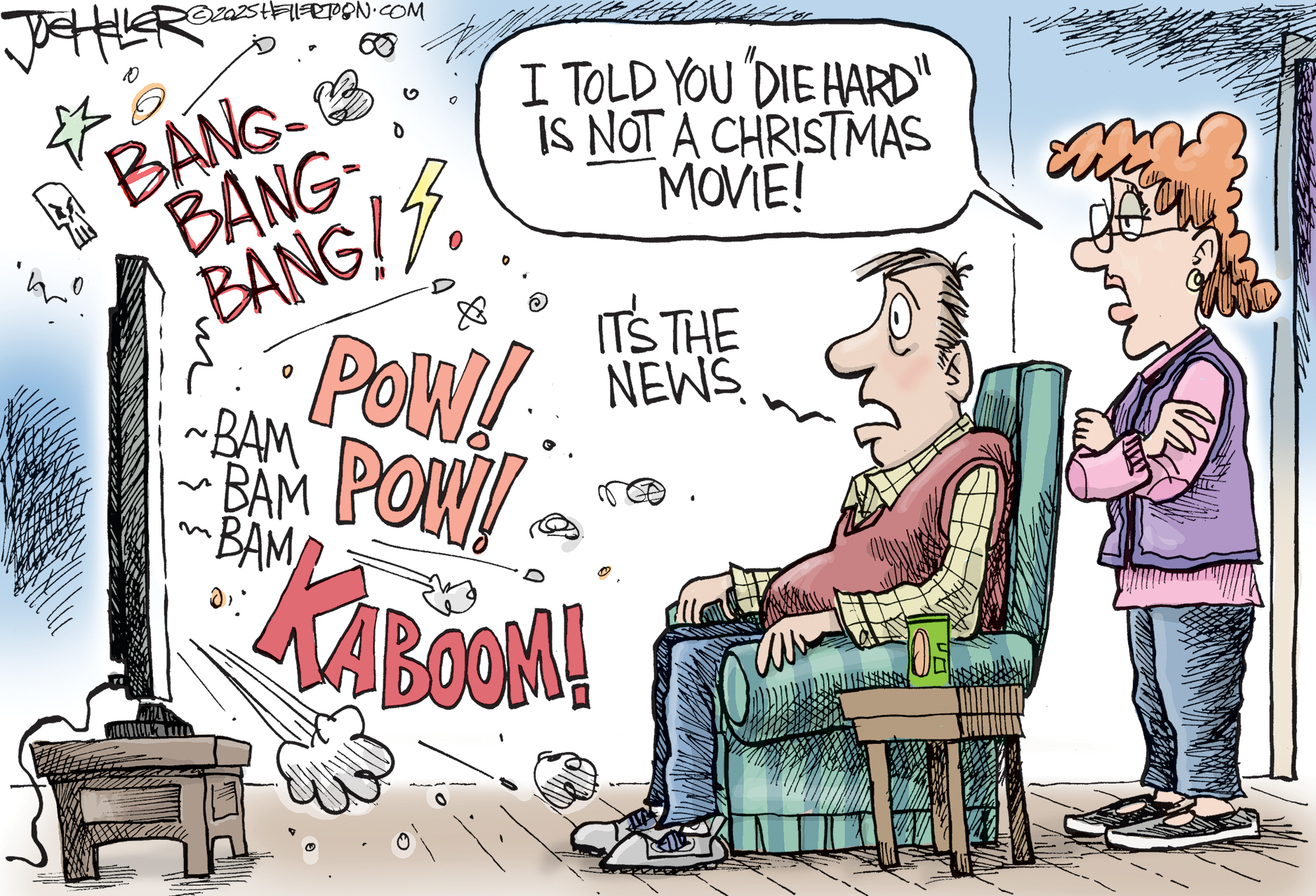Refugees in their own land: The untold story of the internally displaced
Report finds 31 million people were forced to leave their homes and live elsewhere in their country in 2016

War and natural disasters caused millions of people to leave their homes and settle elsewhere in their country last year, says a report from the Norwegian Refugee Council (NRC).
The Guardian describes the internal displacement crisis as "war's greatest scandal".
What is an "internally displaced person"?
The Week
Escape your echo chamber. Get the facts behind the news, plus analysis from multiple perspectives.

Sign up for The Week's Free Newsletters
From our morning news briefing to a weekly Good News Newsletter, get the best of The Week delivered directly to your inbox.
From our morning news briefing to a weekly Good News Newsletter, get the best of The Week delivered directly to your inbox.
Put simply, it is a refugee in their own country. However, because they have not crossed a national border, internally displaced persons (IDPs) are not classed as refugees.
Because of this, the UN's refugee arm, UNHCR, for many years said it was not responsible for these people. However, in 2005, it signed an agreement with aid agencies to take the lead in protecting them.
How many of them are there?
According to the NRC, 31 million people were forced to leave their homes in 2016, but remained in their home countries. They outnumbered refugees by a factor of two to one.
A free daily email with the biggest news stories of the day – and the best features from TheWeek.com
Of this number, 6.9 million left their homes due to violence or conflict while the remaining 24.2 million were displaced by natural disasters, around half of them by floods. Storms, wildfires and earthquakes also cause internal displacement.
Why do IDPs not receive as much attention as refugees?
The NRC says the international community focuses more on refugees in part because they are easier to define and identify.
Alexandra Bilak, director of the Internal Displacement Monitoring Centre, said: "Not including internal displacement as an integral part of [the] migration picture is very short-sighted... If you redirect attention to the countries of origin and to really understanding the driving forces of these movements it would be a much more strategic approach and investment."
Which countries were the worst affected in 2016?
The NRC separates internal displacement caused by conflict from that caused by natural disaster.With 922,000, the Democratic Republic of the Congo (DRC) had the most IDPs forced into homelessness by conflict, followed by Syria (824,000), Iraq (659,000), Afghanistan (653,000), Nigeria (501,000) and Yemen (478,000).
Famine caused many people to flee their homes in parts of sub-Saharan Africa such as Somalia, Nigeria and South Sudan, but conflict was also a factor in these countries.
-
 Political cartoons for December 21
Political cartoons for December 21Cartoons Sunday’s political cartoons include Christmas movies, AI sermons, and more
-
 A luxury walking tour in Western Australia
A luxury walking tour in Western AustraliaThe Week Recommends Walk through an ‘ancient forest’ and listen to the ‘gentle hushing’ of the upper canopy
-
 What Nick Fuentes and the Groypers want
What Nick Fuentes and the Groypers wantThe Explainer White supremacism has a new face in the US: a clean-cut 27-year-old with a vast social media following
-
 How Bulgaria’s government fell amid mass protests
How Bulgaria’s government fell amid mass protestsThe Explainer The country’s prime minister resigned as part of the fallout
-
 Femicide: Italy’s newest crime
Femicide: Italy’s newest crimeThe Explainer Landmark law to criminalise murder of a woman as an ‘act of hatred’ or ‘subjugation’ but critics say Italy is still deeply patriarchal
-
 Brazil’s Bolsonaro behind bars after appeals run out
Brazil’s Bolsonaro behind bars after appeals run outSpeed Read He will serve 27 years in prison
-
 Americans traveling abroad face renewed criticism in the Trump era
Americans traveling abroad face renewed criticism in the Trump eraThe Explainer Some of Trump’s behavior has Americans being questioned
-
 Nigeria confused by Trump invasion threat
Nigeria confused by Trump invasion threatSpeed Read Trump has claimed the country is persecuting Christians
-
 Sanae Takaichi: Japan’s Iron Lady set to be the country’s first woman prime minister
Sanae Takaichi: Japan’s Iron Lady set to be the country’s first woman prime ministerIn the Spotlight Takaichi is a member of Japan’s conservative, nationalist Liberal Democratic Party
-
 Russia is ‘helping China’ prepare for an invasion of Taiwan
Russia is ‘helping China’ prepare for an invasion of TaiwanIn the Spotlight Russia is reportedly allowing China access to military training
-
 Interpol arrests hundreds in Africa-wide sextortion crackdown
Interpol arrests hundreds in Africa-wide sextortion crackdownIN THE SPOTLIGHT A series of stings disrupts major cybercrime operations as law enforcement estimates millions in losses from schemes designed to prey on lonely users